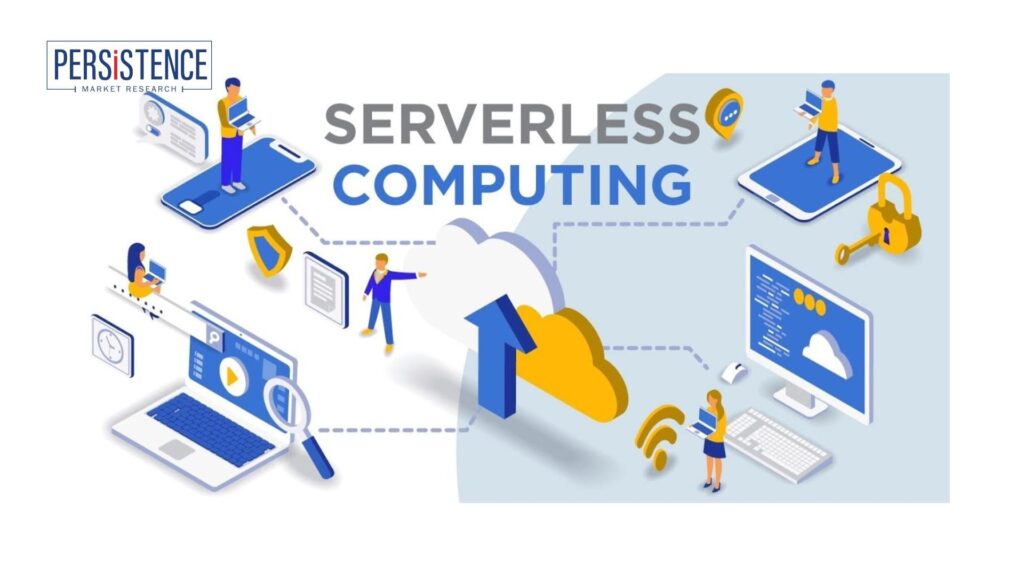In recent years, the fields of serverless computing and edge computing have become two of the most talked-about innovations in the world of cloud computing and IT infrastructure. Both technologies offer unique benefits for businesses seeking to improve performance, scalability, and cost-efficiency. As organizations continue to migrate to the cloud and embrace digital transformation, understanding the distinctions and synergies between serverless computing and edge computing is crucial for making informed technology decisions. This blog will explore and compare serverless computing with edge computing, discussing their unique features, use cases, and market projections, as well as the potential for growth and innovation in both sectors.
What is Serverless Computing?
Serverless computing is a cloud-based execution model that abstracts the underlying infrastructure required for running applications. In this model, developers can build and run applications without worrying about the servers, storage, or networking resources that usually underpin their code. Instead of provisioning and managing servers manually, users can focus purely on the functions or pieces of code they wish to execute.
Serverless computing is often facilitated by cloud providers such as Amazon Web Services (AWS), Microsoft Azure, and Google Cloud, through services like AWS Lambda, Azure Functions, and Google Cloud Functions. These platforms allow developers to upload their code, which is then triggered by specific events or requests. The cloud provider automatically manages the underlying resources, scales the infrastructure as necessary, and charges based on the actual execution time, not on pre-provisioned resources.
This model provides several key benefits:
- Cost-Efficiency: Because users only pay for the actual resources used (such as compute time), it eliminates the need for over-provisioning infrastructure, making it a cost-effective choice.
- Scalability: Serverless computing automatically scales to accommodate demand, meaning developers don’t need to worry about the limitations of fixed infrastructure.
- Simplicity: By abstracting infrastructure management, serverless computing enables developers to focus on writing code without having to handle tasks like provisioning servers, scaling, or maintaining hardware.
What is Edge Computing?
Edge computing, on the other hand, is a distributed computing paradigm that brings computation and data storage closer to the data source. Rather than relying on a centralized cloud data center, edge computing allows devices to process data locally or in proximity to the user, reducing latency and bandwidth usage. This model is especially important in applications requiring real-time processing, such as autonomous vehicles, industrial automation, smart cities, and IoT (Internet of Things) devices.
Edge computing involves deploying small, localized data processing units at “the edge” of the network—closer to where data is generated. For example, rather than sending data from an IoT sensor to a far-off cloud server for processing, the data is processed locally at the edge and sent to the cloud only for storage or further analysis. This drastically reduces latency and provides real-time insights.
Key benefits of edge computing include:
- Reduced Latency: By processing data locally or at nearby nodes, edge computing can deliver much faster response times, crucial for time-sensitive applications like healthcare monitoring or real-time analytics.
- Bandwidth Efficiency: Processing data locally reduces the amount of data sent over the network to the central cloud, which can lower bandwidth costs and reduce network congestion.
- Security and Privacy: With localized processing, sensitive data can be handled within a specific area, minimizing the risk of exposure during transmission to remote servers. Additionally, compliance with data sovereignty regulations is easier to manage.
Serverless Computing vs. Edge Computing: Key Differences
While both serverless computing and edge computing focus on optimizing cloud infrastructure, they differ in their approach and primary use cases. Below are some of the key differences between these two technologies:
1. Infrastructure and Deployment Model
- Serverless Computing: Serverless computing relies on cloud platforms that provide infrastructure as a service (IaaS). Users deploy their applications or code to the cloud, where the cloud provider manages the infrastructure, scaling, and resource allocation. Serverless functions are typically stateless and event-driven, making them ideal for scenarios where quick execution of discrete tasks is needed.
- Edge Computing: Edge computing is primarily concerned with bringing computing resources closer to the data source, such as IoT devices or local data centers. Rather than sending all the data to a central cloud server, the processing happens at or near the edge of the network. This helps minimize latency, reduce data transfer costs, and handle large volumes of data that would be too costly or inefficient to send to the cloud.
2. Latency and Speed
- Serverless Computing: While Serverless Computing Market provides automatic scaling and resource management, the latency is influenced by the time it takes to invoke a serverless function. Serverless functions, especially when not “warm,” may experience cold start latency as the cloud provider provisions resources before executing the function. However, cloud providers have made significant improvements to reduce this latency.
- Edge Computing: Edge computing is designed to minimize latency by processing data as close as possible to the source. This is ideal for applications that require real-time decision-making, such as autonomous vehicles or smart manufacturing systems. Edge computing ensures low-latency processing, making it a better fit for scenarios where speed and responsiveness are critical.
3. Cost Structure
- Serverless Computing: Serverless computing operates on a pay-as-you-go model, where users are charged based on the number of executions or the compute time their functions consume. Since users don’t need to provision or maintain servers, it can be a highly cost-effective solution for applications with unpredictable or low usage.
- Edge Computing: While edge computing reduces bandwidth and latency costs, it requires more upfront investment in edge devices or edge servers. The cost structure of edge computing depends on the deployment model, with expenses related to hardware, maintenance, and managing edge nodes. Edge computing can be more expensive upfront, but it helps businesses save on bandwidth costs in the long run.
4. Use Cases
- Serverless Computing: Serverless is ideal for applications that require high availability and scalability without the need for complex infrastructure management. Examples include event-driven applications, data processing pipelines, microservices, and APIs. Serverless computing is also used for backend services, where functions can be executed in response to HTTP requests, database updates, or file uploads.
- Edge Computing: Edge computing excels in environments where low latency, real-time processing, and data privacy are paramount. This includes use cases like autonomous vehicles, industrial IoT, healthcare monitoring, and augmented reality. For instance, edge computing is used in smart cities to process data from traffic sensors and optimize traffic flows in real-time.
Market Trends and Projections
Both serverless computing and edge computing are seeing rapid growth, driven by increasing demand for real-time processing, cost optimization, and scalable infrastructure. According to Persistence Market Research’s projections, the global serverless computing market is estimated to reach a size of US$ 21.3 billion in 2024. It is predicted to rise at a compound annual growth rate (CAGR) of 15.7%, reaching a value of US$ 58.95 billion by 2031. This remarkable growth is attributed to the increasing adoption of serverless technologies by businesses looking to reduce infrastructure complexity and improve efficiency.
On the other hand, edge computing is also witnessing strong growth, especially with the rise of IoT devices and the need for real-time data processing. While the exact market size for edge computing may vary, it is expected to grow at a similar pace as serverless computing, fueled by the expanding adoption of connected devices and the demand for faster data processing across industries like manufacturing, automotive, and healthcare.
Synergies Between Serverless Computing and Edge Computing
While serverless computing and edge computing are distinct technologies, they are not mutually exclusive. In fact, the two can complement each other in certain scenarios.
- Distributed Serverless Applications: Edge computing can extend the serverless model by enabling serverless functions to run at edge nodes, reducing latency and providing a seamless experience for users. Serverless functions deployed at the edge can respond to local events, process data in real-time, and deliver lower-latency performance.
- Hybrid Solutions: Many enterprises are leveraging hybrid models where serverless computing and edge computing work together. For example, edge devices can handle real-time data processing, and then send summarized results or less time-sensitive data to the cloud for further analysis using serverless functions. This hybrid approach allows businesses to optimize performance, reduce costs, and maintain scalability.
Conclusion
Serverless computing and edge computing are both transformative technologies that are reshaping the IT landscape. While serverless computing focuses on abstracting away infrastructure management and enabling cost-efficient, event-driven applications, edge computing brings computing closer to the data source, reducing latency and improving real-time decision-making.
The global Serverless Computing Market is set to experience significant growth, with a projected CAGR of 15.7%, reaching US$ 58.95 billion by 2031. As businesses look to optimize performance, reduce costs, and enhance scalability, the adoption of serverless and edge computing solutions is only expected to accelerate.
For enterprises looking to harness the full potential of both technologies, adopting a hybrid approach may be the key to achieving optimal performance, scalability, and cost-effectiveness in a rapidly evolving digital world. By combining the strengths of serverless and edge computing, businesses can unlock new opportunities and stay ahead in the competitive marketplace.







